Raga Vartma Candrika
-
How to Enter Raganuga-bhakti
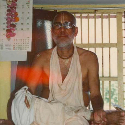
In this Raga Vartma Candrika, Srila Visvanatha Cakravarti Thakura tells us what he has realized about Sri Sri Radha-Krsna’s anuraga by the grace of Sri Caitanya Mahaprabhu and Srila Rupa Gosvami. Anuraga refers to that stage of prema which comes just before mahabhava. Within prema comes sneha, then mana, pranaya, raga, and then anuraga...
-
Illuminating the Path to Ragatmika-bhakti
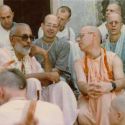
This surrender and complete dedication of the heart to guru is called tadatmya (oneness of heart) in Sanskrit. When an iron rod is placed in fire, the qualities of the fire enter the iron. When fire permeates an iron rod it is the fire that burns other objects; it is not that the iron rod burns other objects; The iron rod may ‘consider,’ “I am fire,” in the sense that the qualities of the iron have become one with the qualities of the fire; it now does the work of fire.
-
Invitation To A Play-Marriage
This is our Gaudiya Vaisnava speciality. We should continue practicing, and go on trying to learn everything that is needed in order to enter raganuga-bhakti. We are sure that Srimati Radhika will arrange everything for us. If She made arrangements for Gopa Kumara and the Govardhana brahmana, why would She not arrange for us as well? Surely, She will do so. She sent one of Her associates to you, to bring you up to this stage. Why would She not arrange further?
-
On Raganuga-bhakti

Srila Bhaktivedanta Narayana Gosvami Maharaja: What is a manjari? We have heard about kamala-manjaris and mango-manjaris. Any creeper or good flower has manjaris. Although the manjari appears first and then the flower, the manjari is always located above the flower. When a bee comes to sit on the flower and drink its honey, the manjaris tremble, being overjoyed.
-
Opulence, Or Sweetness?

Whether or not maha-aisvarya is present, if Krsna's pastimes are nara-lila, then it is madhurya. On the other hand, if by the presence of maha-aisvarya Krsna knows that, "I am Isvara, God," and His bhakta also knows that He is God, that is aisvarya-lila.
-
Sri Guru’s Spiritual Form

This is the third of the three important slokas discussed by Srila Visvanatha Cakravarti Thakura in his Rag-vartma-candrika:
sravanotkirtanadini vaidhi-bhakty uditani tu
yany angani ca tanyatra vijneyani manisibhih -
The Five Principles of Raganuga-Bhakti
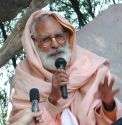
We have completed the explanations of the first two slokas quoted and discussed by Srila Visvanatha Cakravarti Thakura in his Raga-vartma-candrika, but in summary. The first sloka is:
krsnam smaran janam casya prestham nija samihitam
tat tat katha ratas casau kuryad vasam vraje sada -
To Be Covered By Sweetness
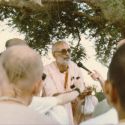
As Lalita trains Srimati Radhika in this way [for Radhika’s naocturnal meeting with Sri Krsna], Rupa Manjari watches, and our guru in this world, as sakhi-manjari in that world, also watches.
-
What’s Favorable For Raganuga-bhakti?

First I explained abhista-bhava-mayi, which may be in an unripe or ripe stage. In the stage of sadhana it is the absorption that "We are gopis;" and in the siddha stage we will actually become gopis. In both cases, it is abhista-bhava-mayi.
-
With Greed In The Center
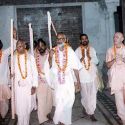
Abhista-bhava-mayi: Whatever practices we execute at the time of our sadhana (the practice executed to attain our goal) will be the same at the time of sadhya (the goal of life, the stage of siddhi, perfection). Sadhakas remember Krsna, Govinda, now, at the time of their sadhana, and they will do so in siddha-sarira (spiritual form as a gopi-manjari) as well. Both remembrances are the same, but one is unripe and the other will be ripe. The subject of the mood will never change, just as kirtana will never be changed, whether in the stage of sadhana or siddha. The sadhakas' absorption in their constitutional mood is called abhista-bhava-mayi.





